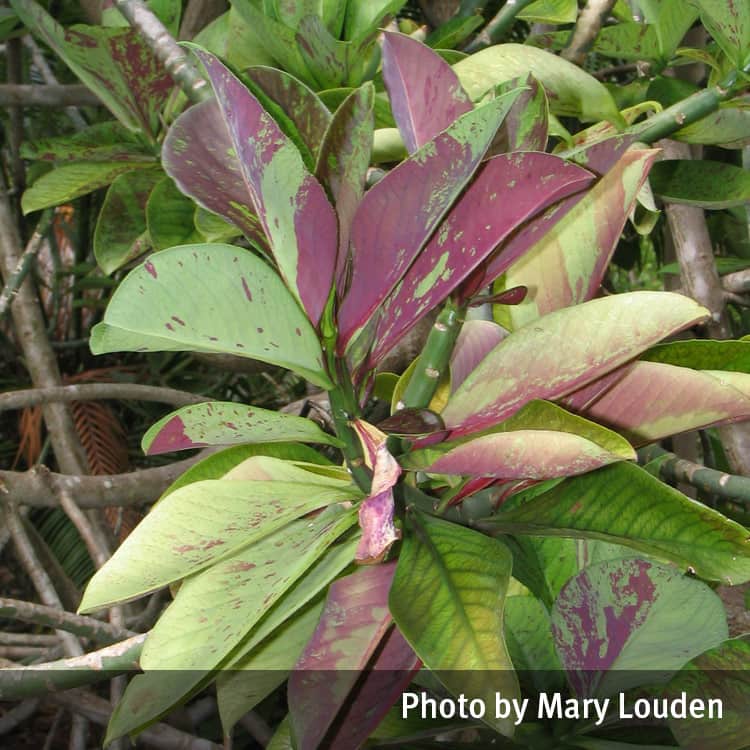Warning
Seek medical assistance for all ingestions and eye exposures.
Description
An ornamental shrub to 3m high. African milk bush flowers are green to yellowish-green, mostly concealed by lance-shaped bracts that are purplish-green above and reddish-purple beneath.
African milk bush leaves are fleshy, spirally arranged, crowded towards the ends of stems, 7.5–10cm long and 2.5–4cm wide, dark green above and paler beneath, with a prominent midrib.
Toxicity
Symptoms
The sap is extremely irritating to the skin, eyes and mouth. Skin contact can cause blisters. There is evidence of sap spraying during pruning, causing irritation to the face, eyelids, nostrils and lips. If swallowed, symptoms can include irritation of the mouth and throat, general discomfort and sometimes convulsions. Symptoms may also be delayed by several hours.
Images

Details
Common name: African milk bush
Botanical name: Synadenium grantii
Other common names: –
Family: Euphorbiaceae
General description: An ornamental shrub to 3m high.
Flowers: The flowers are green to yellowish-green, mostly concealed by lance-shaped bracts that are purplish-green above and reddish-purple beneath.
Leaves: The leaves are fleshy, spirally arranged, crowded towards the ends of stems, 7.5–10cm long and 2.5–4cm wide, dark green above and paler beneath, with a prominent midrib.
Fruit/Berries: The fruit are absent in cultivation.
Other: The sap is milky.